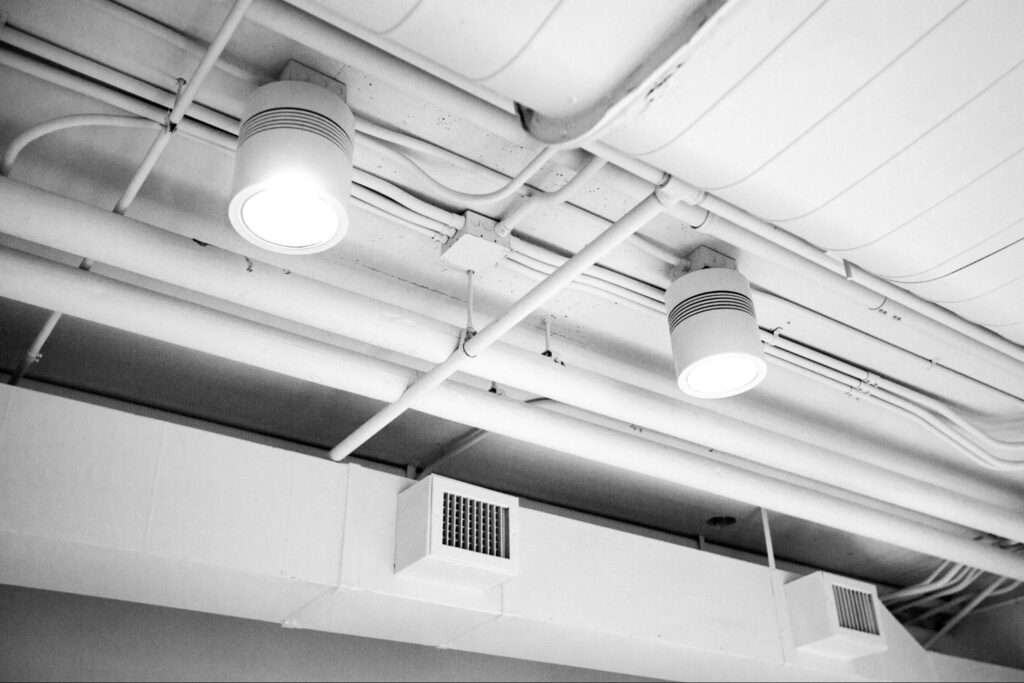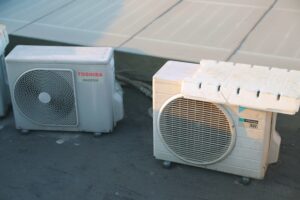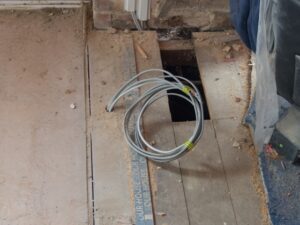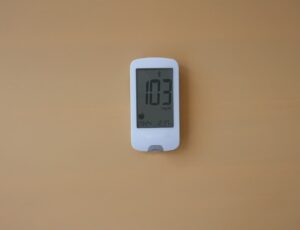Are your energy bills higher than expected?
Uneven heating and cooling in your home may be due to leaky air ducts.
Air duct cleaning and sealing can significantly improve your home’s energy efficiency and air quality, ensuring comfort year-round.
When air ducts aren’t sealed properly, your HVAC system has to work harder, wasting energy and increasing costs. Professional cleaning removes dust and debris that can clog your system. Excel Mechanical can help you with this, providing customized solutions for both residential and commercial spaces.
Our team is known for exceptional quality and great value. We tailor HVAC and plumbing services to meet your individual needs and budget. Trust us to optimize your ductwork, providing a strong return on investment through reduced energy bills and a healthier home environment.
In this blog, you will learn:
- The health benefits of cleaning your air ducts, including improved air quality and reduced allergens.
- Energy savings from proper air duct sealing and how it can help extend the life of your HVAC system.
- Why professional duct cleaning and sealing from Excel Mechanical ensures optimal system performance and reliability.
Let’s get started!
Importance of Air Duct Cleaning
Air duct cleaning plays a crucial role in maintaining a healthy indoor environment and ensuring the efficiency of your HVAC system. Clean air ducts enhance air quality, improve energy efficiency, and offer significant health benefits.
Health Benefits
Clean air ducts reduce the amount of dust and allergens circulating in your home.
Over time, dust, mold spores, and pet dander accumulate in ducts. Regular cleaning minimizes these irritants and helps prevent respiratory problems and allergies.
By choosing us for your duct cleaning, you ensure a thorough process, effectively removing contaminants and improving indoor air quality. Our professional services are designed to keep your home healthy by tackling these issues with precision and care.
Energy Efficiency
Dust and debris in your ducts can make your HVAC system work harder, leading to increased energy consumption. Clean air ducts allow your system to operate more efficiently, reducing energy costs. This efficiency not only lowers bills but also prolongs the lifespan of your heating and cooling equipment.
Air Quality Improvement
Maintaining clean air ducts significantly improves indoor air quality. Pollutants trapped in dirty ducts continuously circulate throughout your living spaces, negatively impacting air quality. By cleaning your ducts, you eliminate these pollutants, ensuring fresher and cleaner air.
Overview of Air Duct Sealing
Air duct sealing is essential for maintaining an efficient and healthy HVAC system. Proper sealing techniques can improve airflow, reduce energy costs, and enhance indoor comfort.
Sealing Techniques
Effective air duct sealing requires identifying leaks and using the right materials.
- Common techniques include mastic sealant, a thick paste applied to seal cracks, and metallic tapes designed for high durability.
- Aerosealing is another advanced method. It uses computer-controlled injection of sealant particles within the ductwork to efficiently seal even hidden leaks.
Before starting, inspect the ducts for visible gaps and seal accessible joints and seams. It’s important to follow safety guidelines to avoid damaging the ducts during sealing.
Benefits of Duct Sealing
Sealing air ducts offers numerous advantages.
- It can significantly lower your energy bills by preventing conditioned air from escaping and reducing the strain on HVAC systems.
- This increases the system’s lifespan and reduces maintenance needs.
- You will notice better indoor air quality since sealing prevents debris and pollutants from entering the ductwork.
- Enhanced airflow results in more consistent temperatures across your space, improving overall comfort.
The Cleaning Process
Air duct cleaning is vital for improving indoor air quality and maintaining HVAC efficiency. It involves thorough inspection, effective cleaning methods, and essential post-cleaning maintenance to ensure lasting benefits.
Inspection
The first step in air duct cleaning is a detailed inspection.
You or a professional will examine the ductwork using cameras and mirrors. This helps identify dirt buildup, mold, and blockages. Spotting these issues early can prevent larger problems.
Dust accumulation around vents and strange odors are some signs that a need for inspection is present. Knowing the condition of your ducts is important to choosing the right cleaning approach.
Cleaning Methods
Various cleaning methods can be used to clean air ducts. The most common techniques include rotary brush cleaning and high-pressure air washing.
- Rotary brush systems involve using a stiff brush that rotates inside the duct, dislodging dirt and debris.
- High-pressure air washing uses compressed air to clear out dust and particles.
- A vacuum system ensures everything is sucked out, preventing it from re-entering the air.
- Chemical biocides might be used with caution for stubborn mold or bacteria.
Post-Cleaning Maintenance
After cleaning, you should focus on maintenance to keep ducts in good shape.
Regular inspections and timely seal checks are essential. Ensuring no leaks or loose fittings helps maintain optimal airflow and energy efficiency.
Changing air filters regularly makes a big difference in keeping the air clean. It’s wise to schedule routine maintenance appointments with professionals who can address issues before they worsen.
With Excel Mechanical, you get peace of mind, knowing experts are dedicated to reliable maintenance that keeps your HVAC system efficient and your indoor air quality high.
The Sealing Process
The sealing process is vital in improving the efficiency of your HVAC system. It involves preparation, selecting suitable materials, and ensuring the job is done correctly through verification. This ensures that your system operates smoothly and efficiently.
Pre-Sealing Preparation
Preparing for duct sealing is a critical step.
It begins with a thorough inspection of your air ducts. This helps identify leaks, cracks, and areas that need attention. Diagnostic tools like smoke pencils or fog machines can help highlight the exact leakage points.
Cleaning the ducts is essential to remove dust and debris, which can hinder sealing. Clear out any dirt or obstructions, such as mold or vermin. This will provide a clean surface for sealing and ensure the materials adhere properly.
Shutting off the HVAC system is also crucial during this stage. It ensures safety and prevents dust from being blown through the system during sealing. Safety gear, such as masks and gloves, should be used to protect yourself and ensure that the preparation is thorough.
Sealing Materials
Choosing the right sealing materials is essential for a successful completion.
- Mastic sealant is popular for sealing gaps and cracks because it provides a flexible and durable seal. It’s useful for various duct materials and can accommodate slight movement or vibration.
- Foil-backed butyl tape is another option for closing gaps. It’s effective for sealing joints and seams due to its strong adhesive properties and resistance to extreme temperatures. This tape works well in a variety of environments.
- Acrylic adhesives can also be used for specific scenarios. They provide strong bonds and can be more affordable than some other choices.
Evaluating and discussing your needs with professionals is essential for selecting the best material.
Verification of Sealing
After sealing, you must verify the results to address all leaks properly. This process often involves pressure testing. A blower door test or duct blaster test can measure the airtightness of your ducts.
Inspecting the sealed areas visually ensures the material has adhered correctly and completely covers the gaps. Pay close attention to previous problem areas to ensure effectiveness.
Working with experts guarantees high-quality HVAC and plumbing services. These professionals aim to provide great value and tailored solutions for all needs and budgets.
You can trust them to ensure your system is fully optimized.
Choosing the Right Service Provider
When selecting a service provider for air duct cleaning and sealing, it is crucial to examine their industry certifications and adherence to standards. These elements ensure that the provider has the expertise and accountability to deliver quality work.
Certifications & Standards
To ensure quality, look for providers with certifications from recognized HVAC authorities.
Such certifications indicate that they meet industry standards. A certified provider adheres to procedures that ensure efficiency and safety. This approach helps in maintaining healthy indoor air quality and system efficiency.
Excel Mechanical exemplifies a commitment to these standards. Known for exceptional quality, we provide HVAC and plumbing services customized to fit your needs and budget.
Our expert team aims to offer reliable and cost-effective systems for residential and commercial clients.
Environmental and Safety Considerations
When considering air duct cleaning and sealing, consider the chemicals used and how waste is managed. These factors affect both the environment and personal safety.
Use of Chemicals
The chemicals used in cleaning air ducts can pose risks if improperly handled.
Some cleaners may contain harsh chemicals that can leave behind residues. These residues could affect indoor air quality and lead to health issues.
Always ensure product labels clearly list ingredients and check for potential health risks. Consider choosing environmentally friendly or less toxic cleaning products. They help protect not only you but also the planet.
Disposal Practices
Proper disposal of waste generated during air duct cleaning is vital. Dust, dirt, and debris can contain pollutants that shouldn’t end up in landfills.
Ensure that any waste, especially chemical waste, is disposed of according to local regulations. Check if the cleaning service recycles parts, like filters, and ensures no waste goes into standard trash.
Our adherence to local laws and attention to detail make us a trusted choice for residential and commercial service. We deliver exceptional results while being environmentally responsible.
Air Duct Maintenance Tips
Regular air duct maintenance can improve air quality and system efficiency. Here are some valuable tips:
- Inspect Ducts Regularly: Check for dust buildup or any signs of mold. This can prevent problems before they start. If you notice any issues, it might be time to call a professional.
- Filter Changes: Change air filters every 1 to 3 months, depending on your system and usage. This simple step can improve airflow and keep your air clean.
- Keep Vents Clear: Ensure that furniture or other objects do not block vents and registers. This allows air to circulate properly and keeps your system from working too hard.
- Ensure Proper Sealing: Check for leaks or gaps in your ductwork. Sealing these can improve efficiency and lower energy costs.
When to Consider Replacement
Certain signs indicate it might be time to replace your air ducts.
- If you notice uneven temperatures in your home, it could mean your ducts are leaking or have blockages. Ducts over 15 years old often have wear that reduces efficiency.
- Another indicator is noisy HVAC operation. Rattling or whistling sounds can suggest that ducts are in poor condition. This is not only annoying but can also lead to higher energy bills.
- Frequent repairs are a red flag. If you’re constantly calling technicians to fix your duct system, investing in new ducts might be more cost-effective. Newer ducts perform better and require less maintenance.
- Visibly damaged ducts are another signal. Look for dents, rust, or gaps in the ductwork. These issues can impact air quality and efficiency.
Cost-Benefit Analysis
When evaluating the benefits of air duct cleaning and sealing, you must consider the costs you might face. Clean ducts improve air quality and help your HVAC system run efficiently, potentially saving energy bills.
Costs:
- Professional duct cleaning services: $300 – $500
- Sealing services: $1,000 – $2,500
Benefits:
- Improved Air Quality: Reduces allergens and dust, creating a healthier living space.
- Energy Efficiency: Sealed ducts prevent air leaks, ensuring more effective heating and cooling.
- Extended HVAC Lifespan: Reduces strain on your system by ensuring optimal airflow.
Choosing a reputable service is key to maximizing these benefits. Our team of experts at Excel Mechanical is committed to exceptional quality and value. With personalized systems to meet your specific needs and budget, you’ll get the best return on your investment.
Your choice impacts both your comfort and wallet. When deciding, consider factors like system age, home size, and individual needs. Taking a proactive approach ensures your home runs more smoothly, benefiting both health and costs.
Frequently Asked Questions
When it comes to air duct cleaning and sealing, there’s a lot to consider. You want to make sure you’re getting the best value and results for your home or business. Let’s answer some common questions to help you understand why these services are so important and how they can benefit you.
How much does it typically cost to clean and seal air ducts?
The cost to clean and seal air ducts can range widely. For a typical home, prices might vary from a few hundred dollars to over a thousand, depending on factors such as the size of the system, the complexity of the ductwork, and regional labor rates.
What is the most effective method for cleaning air ducts?
Rotary brush systems and high-powered vacuums are effective for loosening and removing debris. Choose the method that best fits your system’s layout. Consider professional services for thorough cleaning to ensure all areas are properly addressed.
How is ductwork sealed after a thorough cleaning?
Duct sealing often involves manually applying mastic or foil tapes to seal gaps and connections. Another method involves spraying a sealant inside the ducts, effectively sealing hidden leaks, offering better efficiency.
What are the best practices for residential duct cleaning and sealing?
Regular inspections and cleanings every few years help maintain optimal air quality. Key practices for successful duct maintenance include using the right equipment, targeting problem areas, and choosing the most effective sealing method.
Can I do air duct cleaning and sealing on my own, and if so, how?
While some basic cleaning can be done with household tools, sealing ducts requires professional equipment and expertise. DIY methods might not fully address hidden issues, so professional services are often recommended for comprehensive care.
What advantages does Aeroseal duct sealing offer over traditional methods?
Aeroseal duct sealing is highly effective in reaching and sealing inaccessible areas, providing a comprehensive seal throughout the entire duct system. This method reduces air loss and improves HVAC efficiency. It’s often preferred for its ability to enhance home comfort and lower energy bills.




